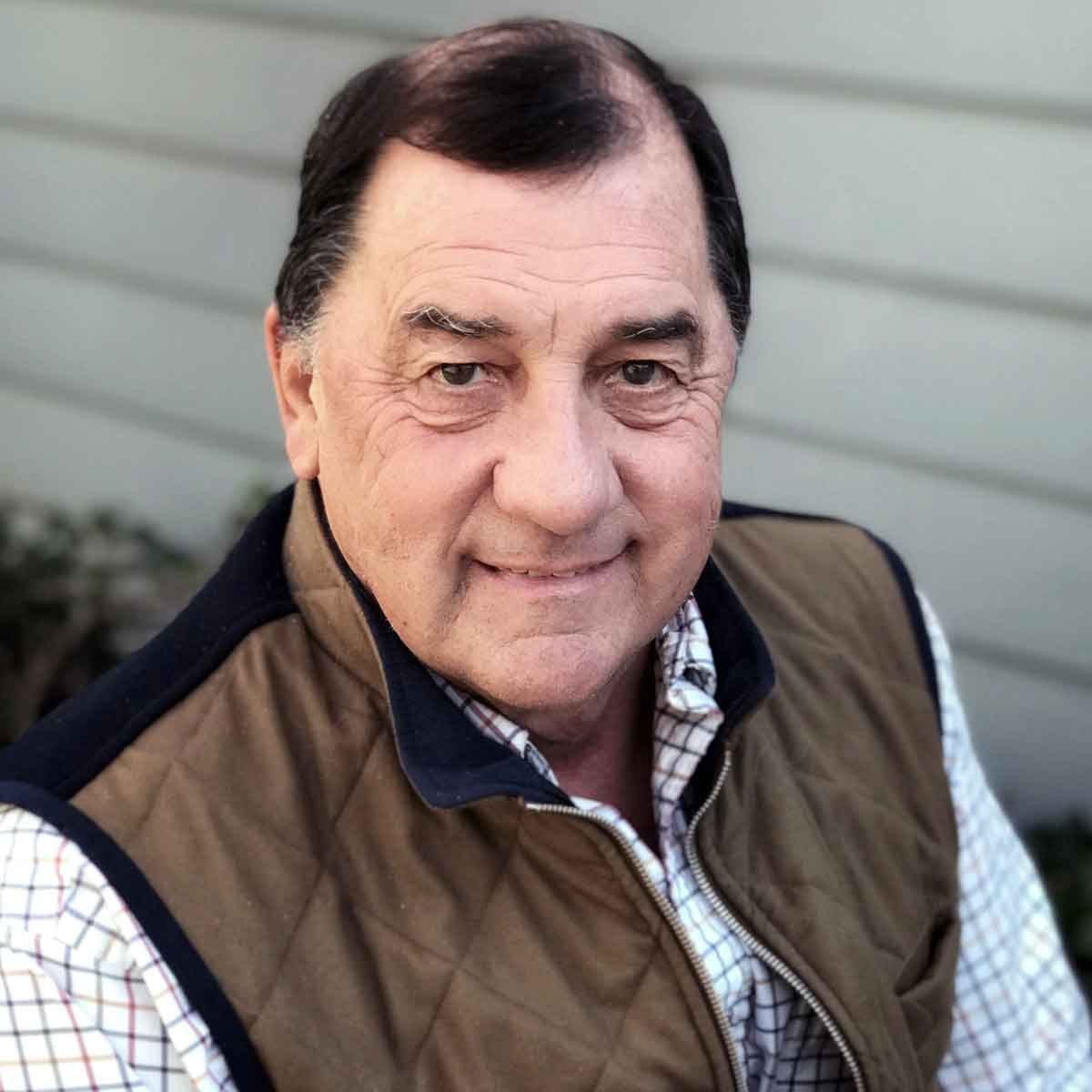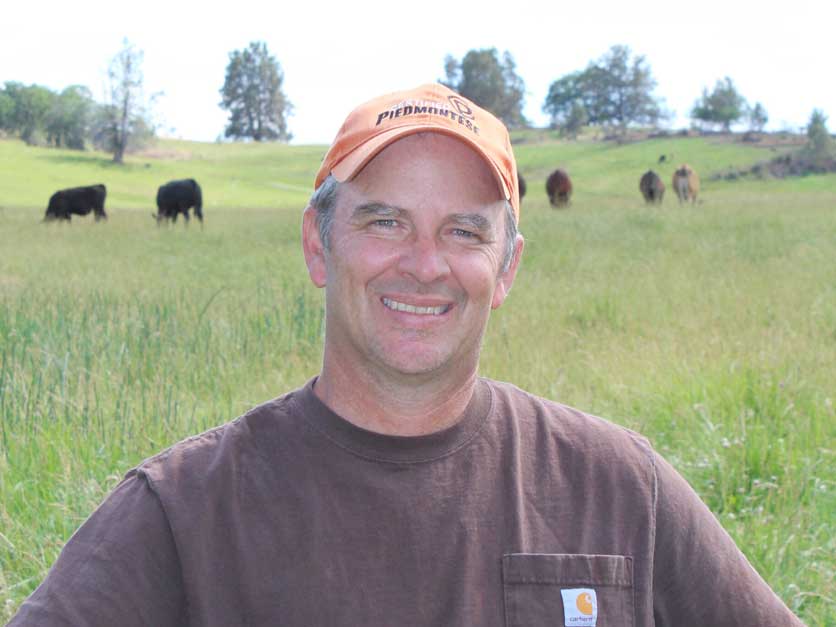The Newsom administration has extended an emergency drought regulation for the Klamath Basin watershed a year after winter storms broke the drought. Ranchers along the watershed gained notoriety in 2021 after violating curtailment orders to divert water for their livestock. Gov. Gavin Newsom then decided to keep the basin’s emergency declaration in place, after rescinding all other drought orders.
The agriculture community felt unfairly targeted and reiterated those frustrations recently when the State Water Resources Control Board approved another year-long extension of the regulation.
The plan dedicates a portion of flows in the Scott and Shasta rivers to supporting native salmon populations and limits surface water diversions as well as groundwater pumping. It amounts to a 30% reduction in pumping during irrigation season for the Scott River and a 15% drop in pumping along the Shasta.
At the time of the hearing, the California Nevada River Forecast Center observed that flows at the Scott River station remained extremely below normal, though the gauge has since recorded a large spike in flows with the advent of the winter storm season. Aside from Southern California’s high desert, the Klamath Basin is the only region in the state still experiencing dry conditions, according to the U.S. Drought Monitor.
During the December hearing, farmers and ranchers thanked board staff for extensive engagement with the community and appreciated changes to the proposal that created more flexibility with livestock watering. The resolution directs staff to continue its work with stakeholders to pursue voluntary efforts that meet the instream flow needs and avoid curtailments, and it adds two more options for such local cooperative solutions (LCSs). The regulation also establishes requirements for installing meters on irrigation wells and reporting that information to the board.
Environmental, sportfishing and tribal interests applauded the board’s approval of the regulation but called for more aggressive actions. They had petitioned the board last year to establish a higher minimum flows standard than the previous two iterations of the regulation.
Troy Hockaday, a member of the Karuk tribal council, argued that the flow curtailments last summer and fall had not delivered enough water for coho salmon to easily reach their spawning grounds. He appreciated Newsom’s leadership in dismantling a series of dams in the Klamath Basin to enable fish passage further upstream but warned it is not a fix-all for the salmon.
“The fish have the senior water rights,” said Hockaday. “The fish were here before any one of us were here.”
 Doug Maner, Friends of the River
Doug Maner, Friends of the RiverCraig Tucker, a policy advocate for the tribe, added that tribal subsistence as well as commercial fishing should take precedent with river flows. He also blasted the new LCSs as being too weak and urged the board to focus on permanent rules for minimum flows, moving beyond temporary emergency regulations.
Environmental and fishing advocates called for the board to adhere to the precautionary principle—a European approach that seeks to rule out all risks and that is gaining traction in Sacramento policy circles.
“The commercial users—the farmers and ranchers who have abused this resource—have the ability to adapt,” said Doug Maner, an advocate for Friends of the River. “The commercial users have options that fish and tribes do not. They can adjust to reduced flows. They can grow less water-intensive crops than, for example, alfalfa. They can find other uses for their land.”
Statements like this drew scorn from several agricultural commenters.
“Here I am today feeling like I need to defend myself against some people that have never actually farmed,” said Brandon Fawaz, who farms in Fort Jones, is an agronomy consultant and serves in the local groundwater sustainability agency. “We've all heard the displeasure and criticisms of late-season irrigation, farmers taking too much, a fourth cutting of alfalfa, late-grass irrigation, etc.”
Fawaz argued that “people have short-term memories,” forgetting the voluntary efforts farmers began in 2021, before a regulation was in place. Such management practices are not adopted overnight and cutting back on water use impacts the quality of hay and the markets available, he said, adding, “This is not business as usual for ag.”
He charged that agriculture “cannot be the only knob that gets adjusted” and that the state cannot conserve its way out of the situation.
Ryan Walker, president of the Siskiyou County Farm Bureau, chastised the administration for its policy approach, calling Newsom’s decision to maintain the drought declaration “an authoritarian attempt to circumvent the legal protections afforded to the citizens of California.”
He decried the emergency regulations as a convenient way to establish permanent flow requirements “without the troublesome delay of due process and full environmental review.” He said the actions have the appearance of protecting species but the board has no way of adequately measuring that success, and that it also shifts the focus away from meaningful solutions involving groundwater recharge and surface water storage.
It's easy to be "in the know" about agriculture news from coast to coast! Sign up for a FREE month of Agri-Pulse news. Simply click here.
“What is the point of collaborative engagement on solutions when the specter of yet another state agency jumping into the fray hangs over our head?” he said, adding, “Our community does not have the financial resources to defend our rights against the power of the administrative state of California.”
 Ryan Walker, Siskiyou County Farm Bureau
Ryan Walker, Siskiyou County Farm BureauRancher Jess Harris believed that extreme environmentalism has led to the weaponization of the Endangered Species Act. He labeled the concerns over dwindling fish populations as fear mongering, arguing that the region is a high desert and the fish have long adapted to low flows during summer. Harris also blasted the board for abusing its power by violating water rights, an act of government overreach that has eroded trust in the agency and prioritized fish over people. He viewed the board as acting like a water czar and rubber stamping any policies the California Department of Fish and Wildlife (CDFW) recommends.
While everyone agreed that an annual emergency stopgap measure was not an effective policy approach, Scott Valley rancher Theodora Johnson worried that a permanent regulation would be just as bad or worse for agriculture. She was concerned about the impacts of slashing groundwater pumping by a third while farmers shoulder new compliance costs for metering.
“I know of no business model that can survive an increase in costs and a 30% reduction in production and survive,” she said.
Lauren Sweezey redirected the blame to the sportfishing industry. A hay farmer in the Scott Valley, Sweezey, alongside Johnson, helped organize an agricultural alliance to educate the public on the issues and has volunteered with CDFW to conduct fish counts. She was excited by the size of the fish she surveyed in 2023 and surmised that it may have been due to the shutdown of commercial fisheries. While the bigger fish spawn more eggs, the industry prizes them for their size, since they are paid by the weight, she explained.
Board members sympathized with the frustration from agriculture and other stakeholders. But board chair Joaquin Esquivel pushed back on criticism that the water board is favoring one interest group over another.
“This board isn't trying to represent agriculture. It's not trying to represent tribes. It's not trying to represent any one community,” said Esquivel. “It truly is trying to do our best to balance amongst it.”
Other board members acknowledged the concerns but reasoned the salmon are in such a dire situation that immediate action is needed. Several hoped well metering would provide additional information that will deliver better regulatory options and a more detailed understanding of the problem for all stakeholders.
For more news, go to Agri-Pulse.com.


